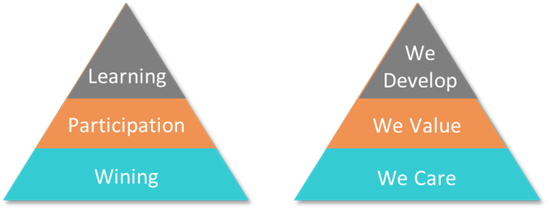Unleash the Full Potential of your Employees in Creating a Fearless and Safe Culture

So that your people...
- Can speak up with ideas, questions and concerns, without any fear of consequences.
- Are open about admitting mistakes, failures and can warn you for future difficulties
- Feel comfortable in taking interpersonal risks and are able and willing to resolve conflicts.
- Can easily express opinions and convictions and become excellent in creativity and innovation.
What will be the result if you unleash the full potential of your people?
- Increased understanding, collaboration and better problem-solving capacities.
- Leading to an overall organizational effectiveness and consistent high levels of performance.
What is a fearless and safe culture?
Employees feeling genuinely valued and supported, resulting in a Safe Space for everyone.
- A Fearless Company Culture is built by employees feeling genuinely valued by their employers and knowing that their success is supported.
- Employees want to work for organizations that appreciate them as individuals; they want to be seen, heard, and supported.
What are the most important concepts (steps) in building a safe culture?

- Create a Culture of Wining
We care for our employees and support them for the success of the organization. - Create a Culture of Participation
We value our employees and their ideas and collaboration for a better organization. - Create a Culture of Learning
We develop and invest in our employees for the best of the organization.
Summarizing: Both the employees and the company win and thrive as a result.
1. Play to Win vs Playing not to Lose - a Culture of Winning
When leaders do not offer their people a safe space:
- The employees will start to play it safe themselves - with all negative consequences.
- They will avoid being vocal or trying new approaches - holding back in their engagement.
- They will hesitate to take ownership - they don’t want the risk of failing or being judged.
2. Redefine your Leadership Role - a Culture of Participation
- In many workplaces, leaders are seen as authorities who know best, giving instructions, and judging how well they’re carried out.
- But in a fearless workplace, leaders instead set the direction and goals, then encourage people to contribute their own ideas and insights.
- Setting up structures specifically for sharing information. These can be regular workshops, focus groups, or meetings.
3. Reframe Failure as Learning Situations - a Culture of Learning
- Being OK with failure at work is the first step in creating a fearless environment.
- When team leaders start talking about failure as something that often happens and as a learning opportunity, people become comfortable taking risks, trying out new things, and openly discussing their mistakes.
What might happen, when a safe culture is ignored or neglected?
When leaders do not consciously work on a safe space culture, you will often find:
- A Culture of Competition
We do care very much for the numbers and customers - resulting in anxiety among employees. - A Culture of Control
We do value that employees just follow the instructions and rules - resulting in blaming and less engagement. - A Culture of Condemnation
We develop an error-free culture - resulting in blame shifting and finger pointing and people hiding.
Summarizing: The organization has focus and is a winner, resulting in anxiety for the employees.
Learn more about the 7 Benefits of Creating a Safe Workplace
The 7 Benefits of Creating a Safe Workplace


